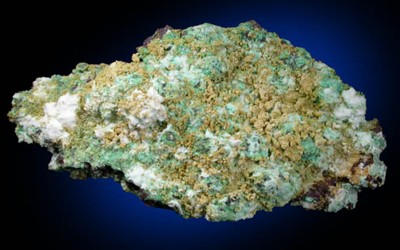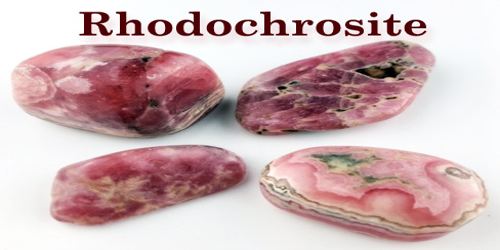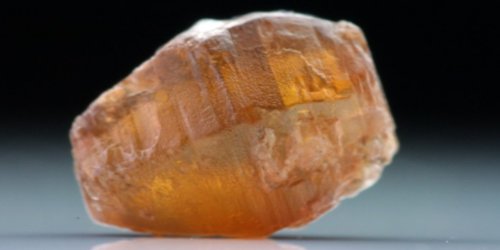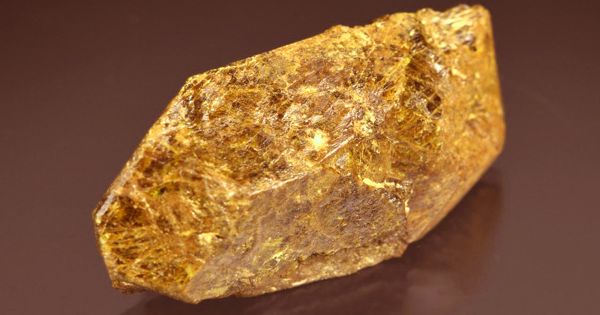Goslarite is a hydrated zinc sulfate mineral (ZnSO4·7(H2O)) which was first found in the Rammelsberg mine, Goslar, Harz, Germany. It is a mineral that consists of white zinc sulfate formed by oxidation of sphalerite and that usually occurs massive. It was described in 1847. Goslarite belongs to the epsomite group which also includes epsomite (MgSO4·7H2O) and morenosite (NiSO4·7H2O).
General Information
- Category: Sulfate mineral
- Formula: ZnSO·7(H2O)
- Crystal system: Orthorhombic
- Crystal class: Disphenoidal (222) (same H-M symbol)

Fig: Goslarite – hydrated zinc sulfate mineral
Properties
The color of goslarite ranges from brownish to pinkish, blue, brown, colorless, green and green-blue. The luster ranges from vitreous to nacreous and silky (if fibrous). Goslarite is soluble in water, has an astringent taste, and is strongly diamagnetic.
- Formula mass: 287.56 g/mol
- Color: Colorless, pinkish, white, greenish, green, blue, green blue, bluish and brownish
- Crystal habit: Acicular, massive, stalactitic
- Fracture: Conchoidal
- Tenacity: Brittle
- Mohs scale hardness: 2.0–2.5
- Luster: Vitreous (glassy)
- Streak: White
- Specific gravity: 1.96
- Optical properties: Biaxial (-)
Geologic occurrence
Goslarite is formed from the oxidation of sphalerite ((Zn, Fe)S). It was first found in Rammelsberg mine, Goslar, Harz, Germany. It often occurs as an efflorescence on timbers and walls of mine passages. It is widespread as a post-mining efflorescence in mines that contain sphalerite or any zinc minerals.
Goslarite is an unstable mineral at the surface and will dehydrate other minerals like bianchite (ZnSO4·6H2O), boyleite (ZnSO4·4H2O) and gunningite (ZnSO4·H2O).
Association: Epsomite, melanterite, pickeringite, chalcanthite, gypsum.
Information Source:
















